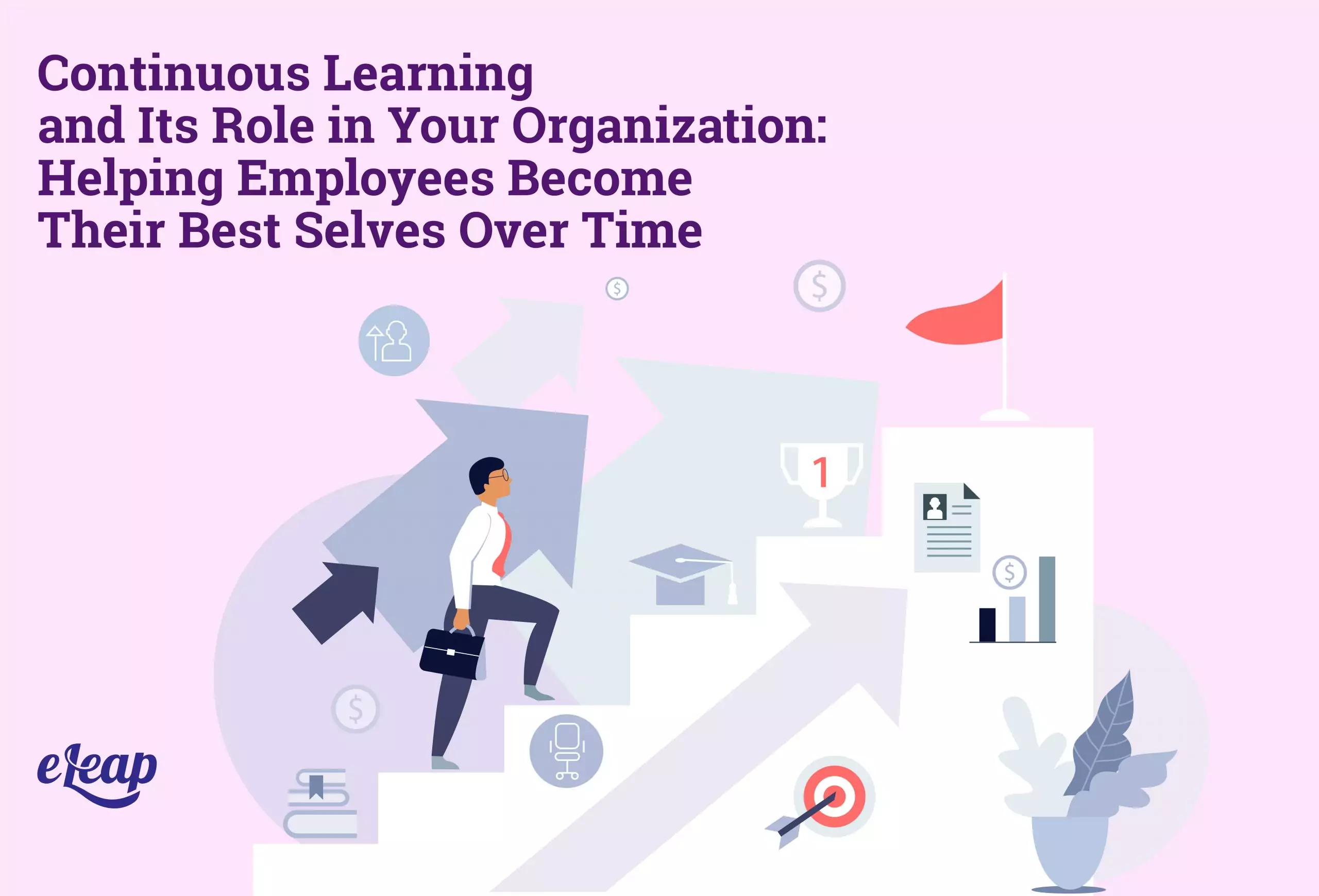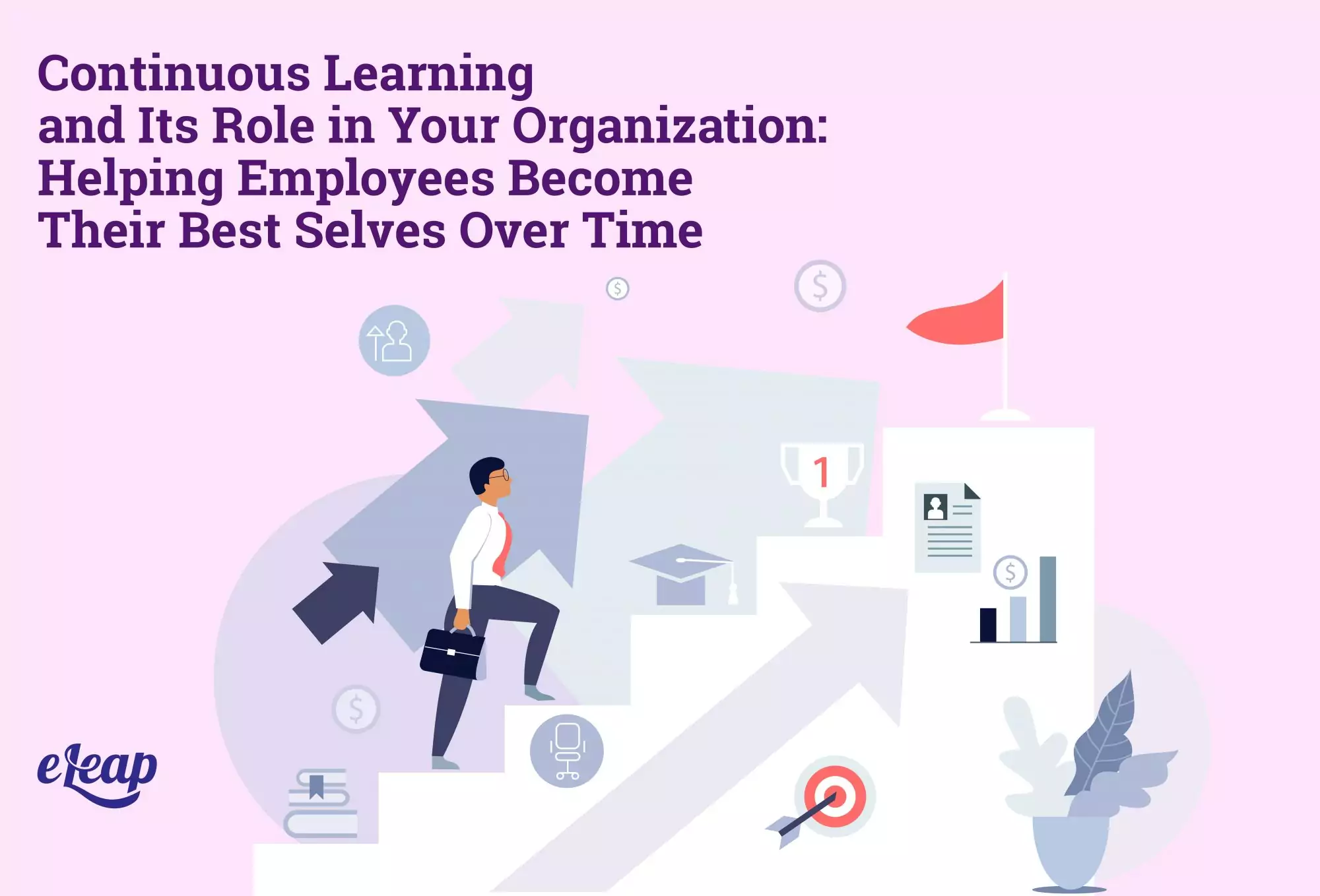Continuous Learning and Its Role in Your Organization: Helping Employees Become Their Best Selves Over Time

Learning and development (L&D) initiatives often focus on just-in-time training and professional skills development. Corporate training, continuing education (CE), and the like are good examples of this. However, your employees need support and resources to become their best selves over time. This process is called continuous learning, and it’s really nothing more than the continual expansion, growth, and development of knowledge and skills.

Continuous Learning in the Professional Environment
In the past, organizations assumed that the professionals they hired had the skills required for the job (as attested by education, experience, and more). Those skills were usually all that was needed – an employee’s role rarely changed. Today, that is not the case at all.
Professionals at all levels are faced with new developments and radical changes to once-familiar environments. In response to these ongoing changes, professionals must invest in continuous learning to further expand their knowledge and skills. What changes drive the need for continuous learning, though?
- Technology – One of the largest change drivers in the world is the ongoing evolution of technology. As the world becomes increasingly digitalized, professionals must master new skills and knowledge to perform their job duties.
- Laws – The legal landscape is in constant flux, and HR must keep up with those changes so that employees can be provided with continuous learning on topics like diversity, inclusion, acceptance, and more.
- Regulations – Many industries see changing rules and regulations as best practices are developed, new laws are forged, and the implications of technology become clearer. Continuous learning helps ensure compliance with rules and regulations, as well as the ability to apply those best practices at all levels in an organization.
Continuous Learning: Examples of Group and Individual Learning Activities
Continuous learning does not need to occur in a formal setting to be effective. In fact, individuals (and even groups) learn continually in a broad range of ways. Technically, anything someone does that fosters further learning or skill mastery falls under the heading of continuous learning, including the following:
- Asking for advice and guidance
- Asking for further information when they do not understand something
- Practicing skills they have already learned to sharpen/improve them
- Observing others at work, particularly more experienced, knowledgeable, or skilled employees
- Following self-improvement paths, including online training programs
- Experimenting with new ways of doing things to achieve better outcomes or efficiency
For teams within the organization, continuous learning does not focus so much on individual outcomes, but on learning and honing the skills necessary for the team to acclimate to changes in its role, or within the business or industry, while fostering better outcomes and ensuring that team output aligns with the organization’s overarching goals.
The Impact of Continuous Learning on Business Stability and Longevity
Continuous learning has profound impacts on employees and teams, but what about the business itself? Actually, it’s a critical consideration for stability, longevity, cost-reduction, and other critical goals. Those are all tied to the outcomes of investing in an organization’s people.
When you invest in your current employees by providing them with additional learning opportunities, it is possible to achieve many things, including:
- A reduced need to hire new employees, which:
- Drives down costs
- Reduces time consumption
- Frees HR and other employees to focus on what they do best
- The ability to grow and develop current employees, which:
- Improves employee engagement
- Improves talent retention
- Drives better efficiency and productivity
- Improves trust while creating a culture that values learning and development
- Creates a more agile, forward-facing organization, which:
- Improves your ability to compete within an industry
- Adapt more quickly to changing rules, regulations, or customer expectations
The Connection between Social and Continuous Learning
We’ve discussed the importance of continuous learning and its impact on individuals, teams, and the organization itself. However, what about that other frequently heard buzzword in L&D circles – social learning? What is it and how does it connect with continuous learning initiatives?
Actually, you’ll find that social learning and continuous learning are connected at a deep level. In fact, they’re inextricable from one another. Social learning is part and parcel of continuous learning, and vice versa. How does this work, you ask?
What our peers, friends, and family members are learning and doing has a direct, measurable impact on all of us. That applies to all areas of our lives, too, not just to formal learning within an employment environment. For instance, when someone learns something new and, excited about the achievement, they share it on Facebook or discuss it on LinkedIn, we have the opportunity to broaden our own knowledge-base and skillset, as well.
In many ways, social learning drives individual learning, and it also affects team learning. For instance, someone masters a new skill and feels that it would be valuable to the team at work. They discuss the training with the team leader or manager, map it to important business outcomes, and then roll out the training to the entire team through the LMS.
Social learning goes well beyond this, though. Networks like Facebook and LinkedIn offer access to an incredible diversity of groups dedicated to specific topics, many of which have direct implications for employee roles and even the success of a business. For instance, an employee interested in marketing and advertising might join several Facebook groups dedicated to digital marketing strategies to hone their skills and make themselves more effective.
Continuous Learning Is Essential
No matter what your industry might be, continuous learning is essential. It shows that you value your employees while simultaneously helping them learn and develop, which has profound impacts on your ability to compete and run a profitable organization.
However, continuous learning is not limited to formalized modules, quizzes, and the like, but occurs organically in many different ways. Encourage your employees to look for learning opportunities in their everyday activities.